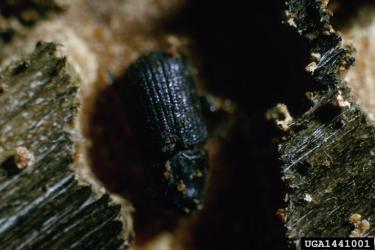When Mountain Pine Beetles Attack
Mountain pine beetles can turn entire hillsides reddish brown. The beetles themselves are tiny, though—they’re about the size of a grain of rice and they’re only out in the open for a few days a year. How can you know if your trees are under attack?
WHAT DOES A MOUNTAIN PINE BEETLE INFESTATION DO TO MY TREES?
Mountain pine beetles tunnel out of trees in late summer and fly to new hosts. They dig through the tree's bark to get at the sap. They lay their eggs under the bark; the larvae hatch and spend the winter eating away at the tree. The next summer, the new generation of adult beetles emerge from the dead tree and attack new victims.
If that wasn't bad enough, the adults also carry spores of blue stain fungus on their bodies. This fungus grows quickly into the sapwood, which makes it harder for the tree to drive bugs out.
Trees that are old or stressed by drought or injury have more trouble defending themselves from this attack.
Check your trees in the fall for signs of attack. The process leaves these signs:
- Red needles on the crowns of the trees.
- Popcorn-like bubbles of pitch on the trunk where the beetles dug in. If you cut into the bark just above the holes, you may see the beetles' eggs and larvae are visible under the bark. You may also be able to see their tunnels. If the tree is healthy, cutting into it like this won't hurt it, but if you don't see any signs of beetles, don't keep cutting.
- Piles of sawdust at the base of the tree or in crevices in the bark.
- Woodpeckers may move in on the dying trees, leaving holes in the trunk and chips of bark piled on the ground.
I'VE GOT MOUNTAIN PINE BEETLES. NOW WHAT?
If the signs point to a mountain pine beetle infestation, you can still control the damage. Taking action can save the rest of your forest.
How can I get more tips?
It’s simple! Enter your email below.

